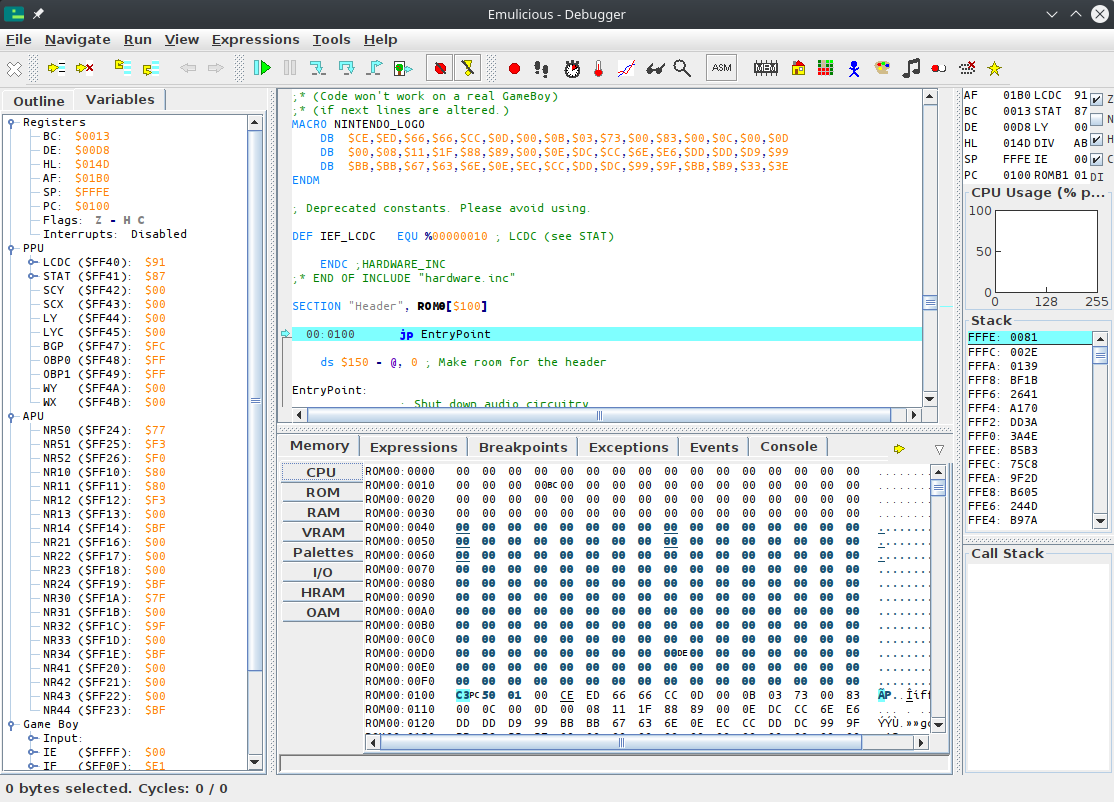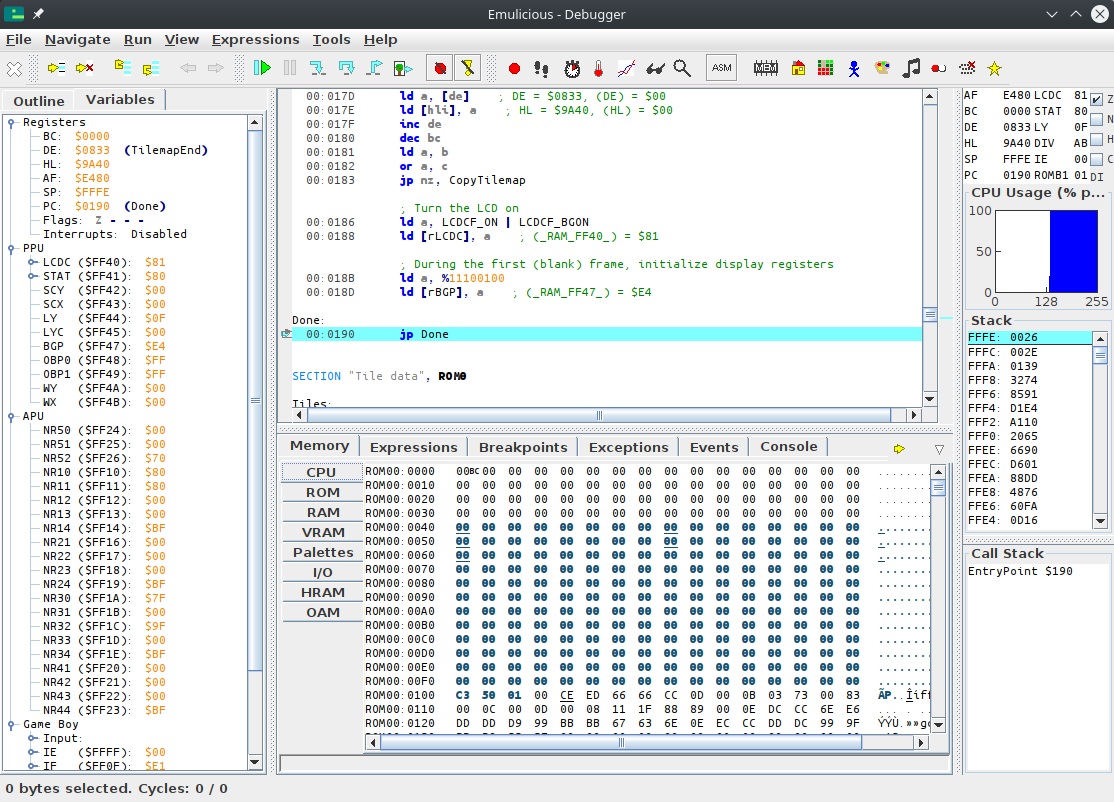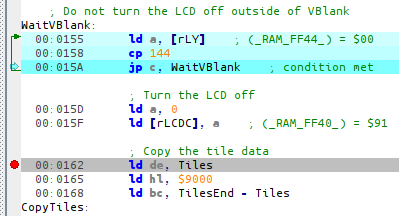Tracciamento
Avete mai sognato di essere dei maghi? Beh, questo non vi darà poteri magici, ma vediamo come gli emulatori possono essere usati per controllare il tempo!
Per prima cosa, assicuratevi di mettere a fuoco la finestra del debugger.
Spieghiamo innanzitutto il layout del debugger:
 In alto a sinistra c’è il visualizzatore del codice, in basso a sinistra c’è il visualizzatore dei dati, in alto a destra ci sono alcuni registri (come abbiamo visto nella lezione sui registri) e in basso a destra c’è il visualizzatore dello stack.
Che cos’è lo stack?
Risponderemo a questa domanda un po’ più avanti… nella Parte Ⅱ 😅
In alto a sinistra c’è il visualizzatore del codice, in basso a sinistra c’è il visualizzatore dei dati, in alto a destra ci sono alcuni registri (come abbiamo visto nella lezione sui registri) e in basso a destra c’è il visualizzatore dello stack.
Che cos’è lo stack?
Risponderemo a questa domanda un po’ più avanti… nella Parte Ⅱ 😅
Preparazione
For now, let’s focus on the code viewer.
As Emulicious can load our source code, our code’s labels and comments are automatically shown in the debugger. As we have seen a couple of lessons ago, labels are merely a convenience provided by RGBASM, but they are not part of the ROM itself. In other emulators, it is very much inconvenient to debug without them, and so sym files (for “symbols”) have been developed. Let’s run RGBLINK to generate a sym file for our ROM:
rgblink -n hello-world.sym hello-world.o
‼️
The file names matter!
When looking for a ROM’s sym file, emulators take the ROM’s file name, strip the extension (here, .gb), replace it with .sym, and look for a file in the same directory with that name.
Passo
Quando si mette in pausa l’esecuzione, il debugger si concentra automaticamente sull’istruzione che la CPU sta per eseguire, come indicato dalla riga evidenziata in blu.

ℹ️
The instruction highlighted in blue is always what the CPU is about to execute, not what it just executed. Keep this in mind.
If we want to watch execution from the beginning, we need to reset the emulator. Go into the emulator’s “File” menu, and select “Reset”, or press Ctrl+Backspace.
La linea blu dovrebbe spostarsi automaticamente all’indirizzo $01001 e ora siamo pronti a tracciare! Tutti i comandi per farlo si trovano nel menu “Esegui”.
- “Resume” simply unpauses the emulator.
- “Step Into” and “Step Over” advance the emulator by one instruction.
They only really differ on the
callinstruction, interrupts, and when encountering a conditional jump, neither of which we are using here, so we will use “Step Into”. - The other options are not relevant for now.
We will have to “Step Into” a bunch of times, so it’s a good idea to use the key shortcut.
If we press F5 once, the jp EntryPoint is executed.
And if we press it a few more times, can see the instructions being executed, one by one!
Now, you may notice the WaitVBlank loop runs a lot of times, but what we are interested in is the CopyTiles loop.
We can easily skip over it in several ways; this time, we will use a breakpoint.
We will place the breakpoint on the ld de, Tiles at 00:0162; either double-click on that line, or select it and press Ctrl+Shift+B.

Then you can resume execution by pressing F8. Whenever Emulicious is running, and the (emulated) CPU is about to execute an instruction a breakpoint was placed on, it automatically pauses.

La freccia verde e il valore di PC indicano il punto in cui l’esecuzione è in pausa.
Se tracciamo le tre istruzioni successive, possiamo vedere che i tre argomenti del ciclo CopyTiles vengono caricati nei registri.

For fun, let’s watch the tiles as they’re being copied. For that, obviously, we will use the Memory Editor, and position it at the destination. As we can see from the image above, that would be $9000!
Click on “Memory” on the bottom window, then “VRAM”, and press Ctrl+G (for “Goto”).
Fantastico, vero?
E poi?
Congrats, you have just learned how to use a debugger! We have only scratched the surface, though; we will use more of Emulicious’ tools to illustrate the next parts. Don’t worry, from here on, lessons will go with a lot more images—you’ve made it through the hardest part!